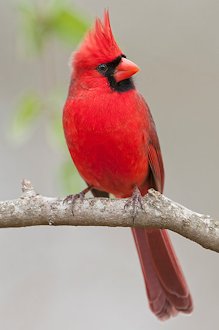
|
Bird Ranges and Barriers - Page 3 Ranges also change with each passing season. For example, many birds migrate to more favorable climates for the winter. We call the portion of a migratory bird's range in which it nests and raises its young, the breeding range; we call the area in which it spends with winter, the winter range. Bird-watchers refer to a bird as a transient if the see it in an area through which it normally passes on migration. If a bird wanders outside of its normal range, we call it a vagrant. We call nonmigratory birds permanent residents. In a similar fashion the planting of trees near farms in the Great Plains has allowed westward expansion of birds of the eastern deciduous forest, such as the Red-bellied Woodpecker and the Northern Oriole. Several of our common backyard species have expanded their ranges as a result of the food provided for them in winter. The ranges of the Northern Mockingbird, Northern Cardinal, and Tufted Titmouse have expanded northward, and the range of the Evening Grosbeak has expanded southward. Every region of the United States has its own set of permanent residents, migrants that spend the summer, migrants that only spend the winter, and transient birds. In good bird books you can tell by color-coded maps which birds you could expect at what time of the year. We see the greatest variety of bird life in any area in spring and fall when migration sends birds our way. |
| Northern Cardinal |